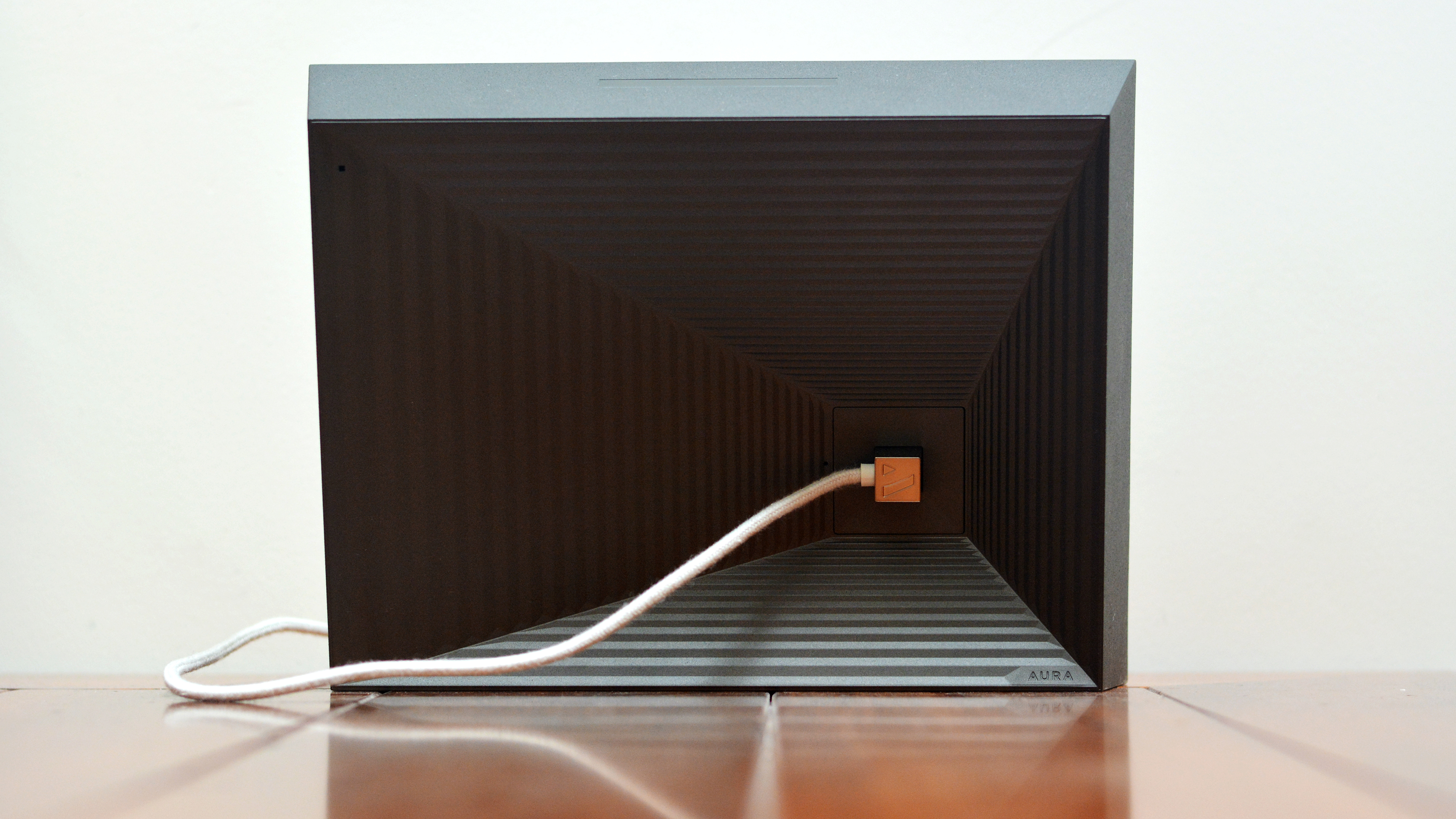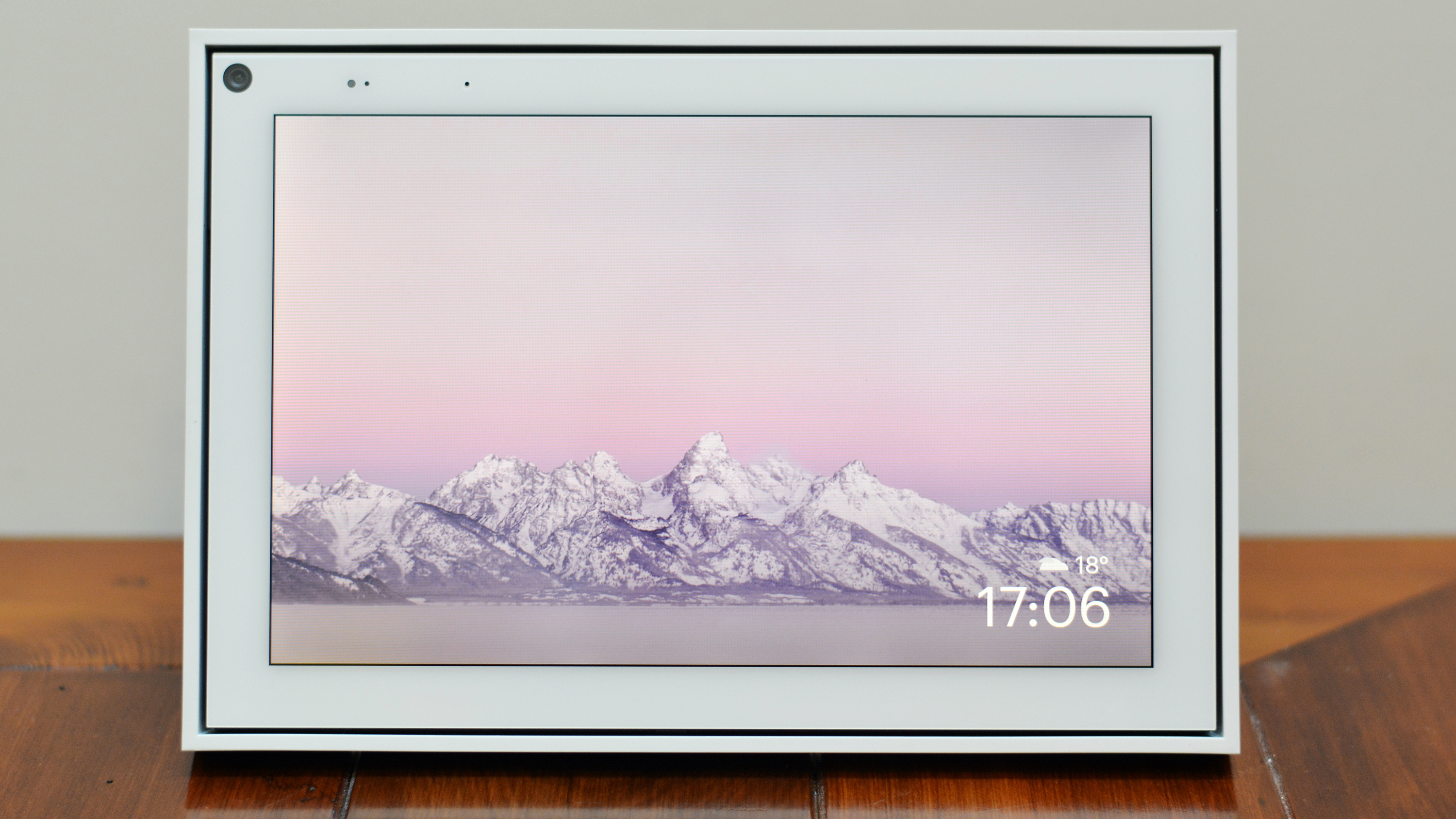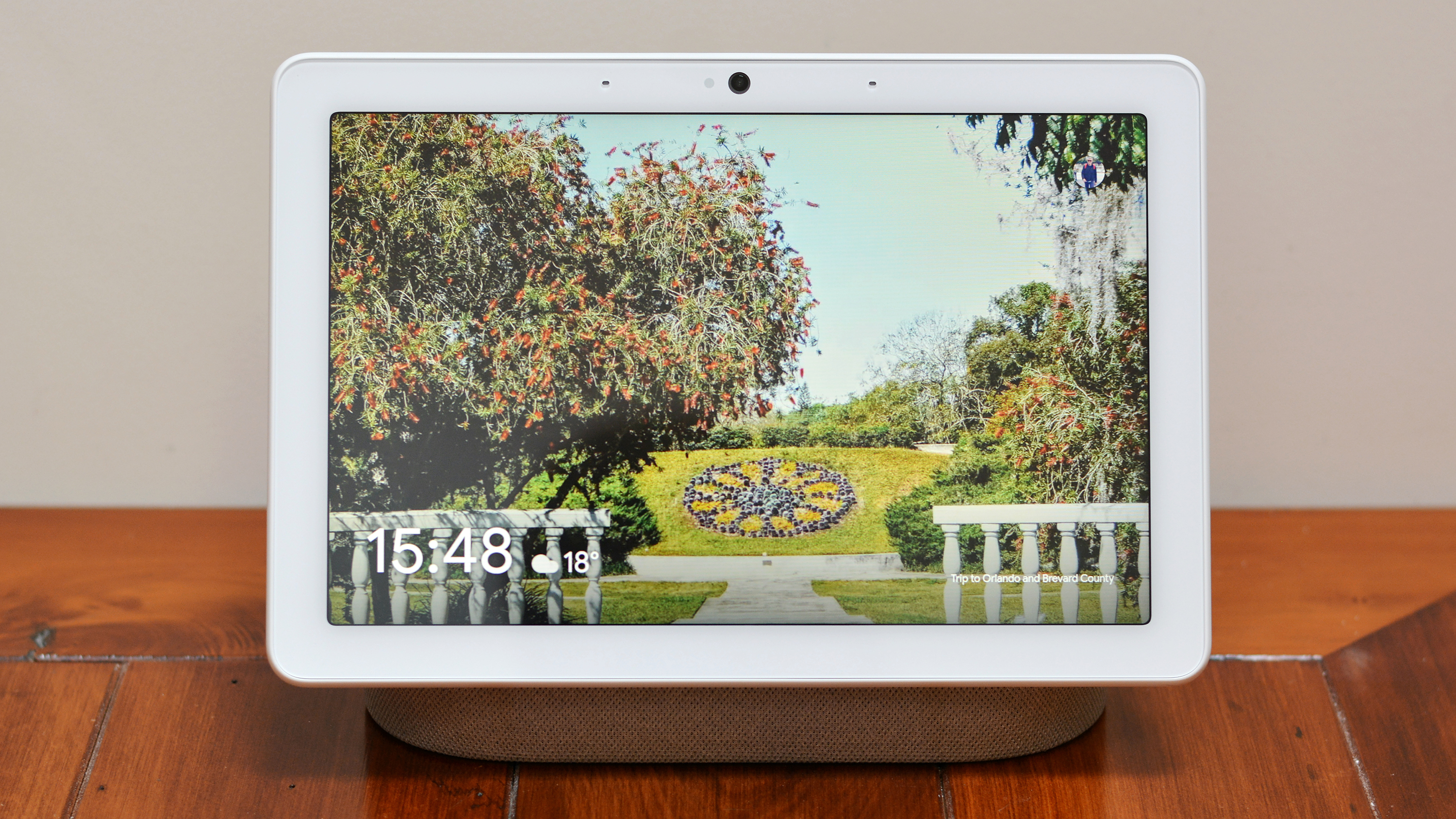How to buy a digital photo frame: the six key things to look for
The key things to consider when snapping up a digital photo frame

Whether you’re buying for the home or office, for yourself or as a gift, there are lots of things to consider when deciding which digital photo frame is right for you.
From build quality to screen resolution, everything about these compact photographic displays has improved over the last few years. But as digital photo frames have become slicker, sharper and smarter, it’s become even harder to choose which one is the perfect fit for your shelf or wall.
- These are the best digital photo frames you can buy right now
To help you decide, we’ve created this in-depth buying guide. Informed by our extensive testing, we’ve highlighted the most important considerations when shopping for a digital photo frame. By the end, you should know exactly how to pick which option suits you (and your shelf) the best.

1. Set your budget
When shopping for a digital photo frame, the first step is to establish your budget. Basic models such as the Nix Digital Photo Frame 8-inch start at around $60 / £50 / AU$85, while larger, sharper and smarter models, like the Aura Mason, can set you back considerably more.
Spending more on a digital photo frame doesn’t necessarily guarantee that you’ll get a better viewing experience – there are several affordable frames that nail the basics – but more expensive models do tend to offer greater versatility, a higher screen resolution or a more premium finish.
Setting a limit on your buying price is an easy way of whittling down your shopping shortlist. Being honest about your budget will eliminate options beyond your means and encourage you to consider the features that matter most.
2. Think about where you’ll place it
Not all frames are made the same – when you’re choosing one for your home or office, it’s important to consider how and where it will fit in.
Sign up for breaking news, reviews, opinion, top tech deals, and more.

Stand setup and footprint
As with traditional photo frames, the most common setup for their digital equivalents is a framed frontage with a supporting stand at the back – but these span a wide range of styles.
The Nixplay Seed Wave (below), for example, features a flexible stand which can be moulded to support the frame in portrait or landscape. Some frames have adjustable plastic stands that can be removed and repositioned to alter the orientation, while others – such as the Facebook Portal – ship with stands that are fixed in position.
It’s worth thinking about whether you need a model with an adjustable tilt angle, especially if you’ll be placing the frame on a higher shelf. It also pays to consider the frame’s physical footprint: certain frames require a fair amount of shelf space for the stand behind, while others – such as the freestanding Aura Mason – occupy only the slim width of the frame itself.
And don’t forget that proximity to a plug is paramount. Most digital photo frames feature power connectors that don’t impact positioning options, but a few – such as the Facebook Portal – have cables that exit from the end of the stand, which prevents you from placing the frame flush against a wall.

Wall-mounting options
Prefer to hang your frames on the wall? Suspending digital photo frames alongside their analogue equivalents can make for a striking setup, but not all frames can be wall-mounted.
Some ship with specific mounting kits, while others – including the Nix Digital Photo Frame 8-inch – feature simple slots for suspending the frame on an existing screw.
Design and finish
It's never a bad idea to visualize how different frames will fit with your interior decor. Matte black is the most common finish for modern digital photo frames, but there are also a few more distinctive options, including the seriously shiny Nixplay 2K Smart Digital Photo Frame in silver.
Similarly, while many digital photo frames take the form of generic rectangles with bevelled bezels, certain models offer a fresh take on the photo frame. The Facebook Portal, for example, offers a floating box frame effect, while the minimalist Aura Mason uses a subtly sculpted finish to great effect. Which suits you best will depend on your personal taste and the existing interior design.
3. Consider the screen
Style aside, arguably the most important aspect when choosing between different frames is the screen that will actually display your photos – and there are several factors to bear in mind.

Size, sharpness and resolution
Screen size can vary substantially, from the compact display of the Nix Digital Photo Frame 8-inch to the Nixplay Seed Wave, with its 13-inch panel. But size isn’t always everything: smaller frames can often be easier to place and, because the pixels are spread over a smaller area, will sometimes be sharper.
Similarly, while larger screens might offer more real estate for your images, they won’t always have a higher resolution, so going bigger doesn’t necessarily mean that your snaps will look better.
Somewhere between nine and ten inches will be the sweet spot for most: compact enough to be convenient, yet still sufficiently sizable to give your images room to breath. But do pay attention to resolution: 1200 x 800 pixels is pretty standard and more than enough for smaller screen sizes, while the sharpest, most detailed displays feature a Full HD resolution or better.
The Aura Mason packs a 9-inch, 1600 x 1200 panel, while the Nixplay 2K Smart Digital Photo Frame, as the name suggests, offers an impressive resolution of 2048 x 1536.

Brightness and viewing angles
Few modern digital photo frames lack for brightness, but several ship with glossy screens.
This won’t be an issue if you’re not planning to place your frame across from a light source, but in rooms with plenty of windows, you’ll want to make sure you pick a frame with a matte coating on the screen – such as the Nixplay Seed Wave – or sufficient brightness to overcome any glare.
Certain frames, including the Aura Mason and Facebook Portal, will automatically adapt brightness to suit the ambient lighting and counter potential reflections.
Color reproduction and vividness
Displaying your photos on a digital frame means you’d like people to see them, so you’ll want to make sure the model you choose does justice to your snaps.
Almost all contemporary LCD panels promise decent contrast and color reproduction, but some are more vibrant than others. If hues are something you’re concerned about, it’s worth selecting a frame that allows you to adjust saturation, contrast and the like – as with Nixplay’s range – or one that offers automatic color correction, such as the Aura Mason.
4. How do you want to load your photos?
From memory cards to cloud storage solutions, the latest digital photo frames offer a whole host of options when it comes to loading your photos. Which one is right for you will depend in part on how you’d like to store and source your snaps.

Memory card and USB slots
A few digital photo frames – such as Nixplay’s range of Nix frames – rely on the traditional method of transferring images by inserting a memory card, generally SD cards. These frames will sometimes also include a USB port for displaying images from a flash drive.
Usually, they occupy the more affordable end of the spectrum and won’t offer features such as Wi-Fi. While memory cards make it more time-consuming to update slideshows and transfer new photos, they do offer more security for those who might worry about storing their images in the cloud – and they won’t be foiled by a malfunctioning router.
Cloud storage and app compatibility
The majority of modern frames feature in-built Wi-Fi, which they use to source slideshow images from libraries in the cloud. The process usually involves transferring your photos via partner apps or web upload tools to dedicated cloud storage, as is the case with both Nixplay and Aura frames. Some models can also connect to third-party cloud drives, such as iCloud or Google Drive, where you might already have images stored.
All of the major cloud providers offer a degree of free online storage, but only a few – including Aura – will give you unlimited capacity. Others, such as Google, Apple and Nixplay, will charge an additional fee if you want to unlock more storage. Most of these frames also feature some in-built capacity to store offline copies of synced images, but you’ll need an active Wi-Fi connection to add fresh files.
Social media integration
If your best snaps are on social media, you’ll want a digital photo frame that can play nice with your established accounts.
Facebook’s Portal is one of the few frames with slick social media integration: sign in and you’ll be able to select albums and snaps to create a slideshow.
5. How much control do you want?
Digital photo frames might be more feature-packed than ever, but not every model offers the same degree of customization in the settings menu. When choosing your ideal frame, it’s worth considering whether you’d like the option to tinker – or if you’d prefer a hands-off approach.

Display adjustments
Most digital photo frames offer options to tweak the display settings. If you want total control over every aspect of the visual setup – including RGB color settings, contrast, brightness and the like – you’ll want something like the Nixplay Seed Wave. And even Nixplay’s more affordable frames, such as the Nix Digital Photo Frame 8-inch, offer a range of adjustment options.
In contrast, displays such as the Google Nest Hub Max and Facebook Portal largely limit manual adjustments to the brightness, while the Aura Mason takes an almost entirely automated approach, with optimal color and brightness settings decided by the frame.
Slideshow settings
Similarly, Nixplay’s frames offer complete creative control over slideshow settings, allowing you to adjust transition effects, the duration of each slide and the order of images.
Others offer a little less flexibility, while some – like the Aura Mason – are entirely bolted down, only giving you the option to adjust the crop of pictures and slide timings. Some will find this too restrictive, but it does have the benefit of streamlining the interface and user experience.
Sleep schedules and motion sensitivity
Several digital photo frames, including the affordable Nix Digital Photo Frame 8-inch, feature motion sensors. These can wake the frame when someone enters the room and, if no motion is detected for a set amount of time, send it to sleep again.
The time periods and options vary from frame to frame and, on certain models – the Facebook Portal, for example – the setting cannot be disabled, meaning the frame will automatically sleep after an hour.
Even without motion sensors – or with the sensors disabled – most models include some form of sleep timer, which will see the frame switch itself off after a set amount of time. Some also have in-built ambient light sensors, which are used to control the automatic brightness and, in the case of the Aura Mason, switch off the display when it gets dark.
How much the sensitivity of these sensors can be adjusted varies from frame to frame, but the default settings are generally spot-on for most of our recommended models.
6. How smart does it need to be?
Besides automatic image adjustments and ambient light sensors, several of the best digital photo frames are, in one way or another, actually smart displays.
This means that they might include voice assistant functionality or be able to interact with other connected tech in your home. How smart you need a frame to be will depend largely on your personal preference and whether you’ve already invested in additional smart home technology.

Bluetooth speaker functionality
Certain digital photo frames, such as the Facebook Portal and Google Nest Hub Max, feature in-built speakers. These might seem superfluous if you already own a standalone Bluetooth speaker, but if the option to watch videos or add soundtracks to your slideshows is appealing, these are worth considering.
Given the slim nature of most models, their output is unlikely to rival a proper home audio setup for sound quality, but the Nixplay Seed Wave’s 5W speakers, for example, are surprisingly punchy – and they can be paired with your smartphone for use as a Bluetooth speaker.
Control interface
How to control a digital photo frame isn’t the first thing most people think of when deciding which one to buy, but it does make a difference. Remote controls might seem old-fashioned, but they’re also reliable, easy to use – even for the uninitiated – and they allow you to command the frame even if it’s situated on an unreachable shelf. Of our top picks, Nixplay’s digital photo frames are the only ones that ship with remote controls.
If you’re comfortable controlling your frame with a smartphone or tablet, most Wi-Fi-enabled frames will also allow you to use the partner app as a virtual remote, whether for changing settings or flicking through images.
Prefer to tap the frame itself? The Aura Mason features integrated touch bars for simple swipe and tap controls, while a few more expensive models feature touchscreens for direct device control – including the Google Nest Hub Max and Facebook Portal. And, as smart displays, the latter two also offer voice control, if you want to command your frame verbally.
Smart home compatibility
Voice assistants aren’t just good for firing up slideshows. The Google Nest Hub Max and Facebook Portal both play nice with smart home equipment, courtesy of Google Assistant and Alexa integration respectively.
If you want a digital photo frame that can form part of your connected abode and allow you to control other devices within it, consider one of these.
- These are the best digital photo frames you can buy right now

For more than a decade, Chris has been finding and featuring the best kit you can carry. When he's not writing about his favourite things for Stuff, you'll find Chris field-testing the latest gear for TechRadar. From cameras to classic cars, he appreciates anything that gets better with age.